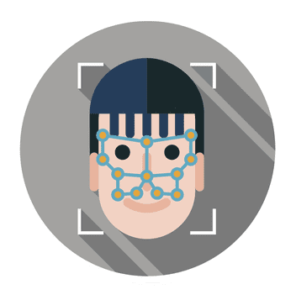The use of facial recognition technology is unquestionably on the rise.  In the US, for example, the Customs and Border Protection agency is rapidly expanding its program of airport deployments; and on the consumer side, this year’s big new iPhone is expected to bring facial recognition to the masses, not just in the US but around the world. It seems that there will soon be a preponderance of the technology in everyday life, yet there are many for whom the technology still has the feel of novelty, and perhaps even science fiction, and it’s difficult to imagine what such a world will look like.
In the US, for example, the Customs and Border Protection agency is rapidly expanding its program of airport deployments; and on the consumer side, this year’s big new iPhone is expected to bring facial recognition to the masses, not just in the US but around the world. It seems that there will soon be a preponderance of the technology in everyday life, yet there are many for whom the technology still has the feel of novelty, and perhaps even science fiction, and it’s difficult to imagine what such a world will look like.
The case of China may offer us a glimpse, however. The use of facial recognition in the country has ramped up quickly in recent years, and its various deployments may offer an illustration of what the unfettered proliferation of such technology will lead to.
Here’s what it looks like right now:
Authorities are using mass deployments to catch wanted criminals and stop money laundering:
Facial Recognition Nabs 25 Wanted Criminals at Chinese Beer Festival
Crowds Disappear from Macau ATMs as Biometric Authentication Implemented: Report
The technology is also making its way to border screening at airports:
Baidu Facial Recognition Tech Coming to Beijing Airport
In the non-government sector, restaurants are experimenting with facial recognition for payments:
Alipay Enables Naked Payments at Upscale New KFC Restaurant
Alibaba’s Experimental Tao Café Replaces Cash With Biometrics
A major tech company is preparing to integrate face biometrics into smart cars:
Baidu’s Apollo Smart Car Program Depends on Face Biometrics
It’s even being used to prevent cheating in student exams and marathons:
Chinese Authorities Use Biometrics to Authenticate Students for ‘Gaokao’ Exams
Biometrics to Bust Runner Ringers in Beijing Half Marathon
… and to stop people from stealing toilet paper:
Facial Recognition Protects Toilet Paper at Temple of Heaven Park


Follow Us